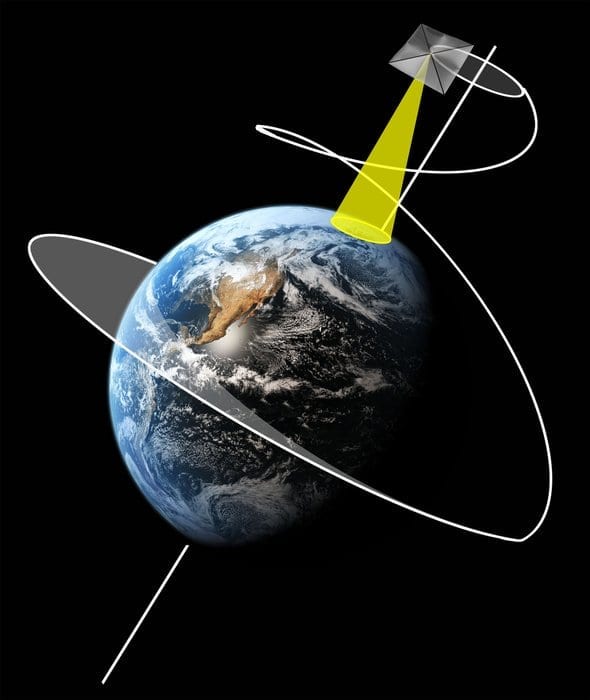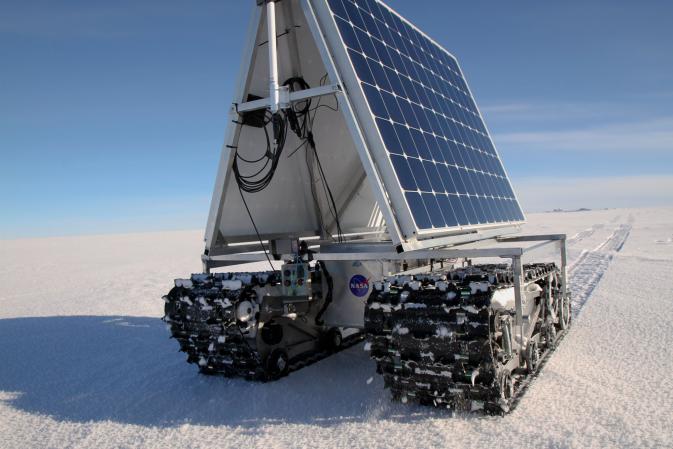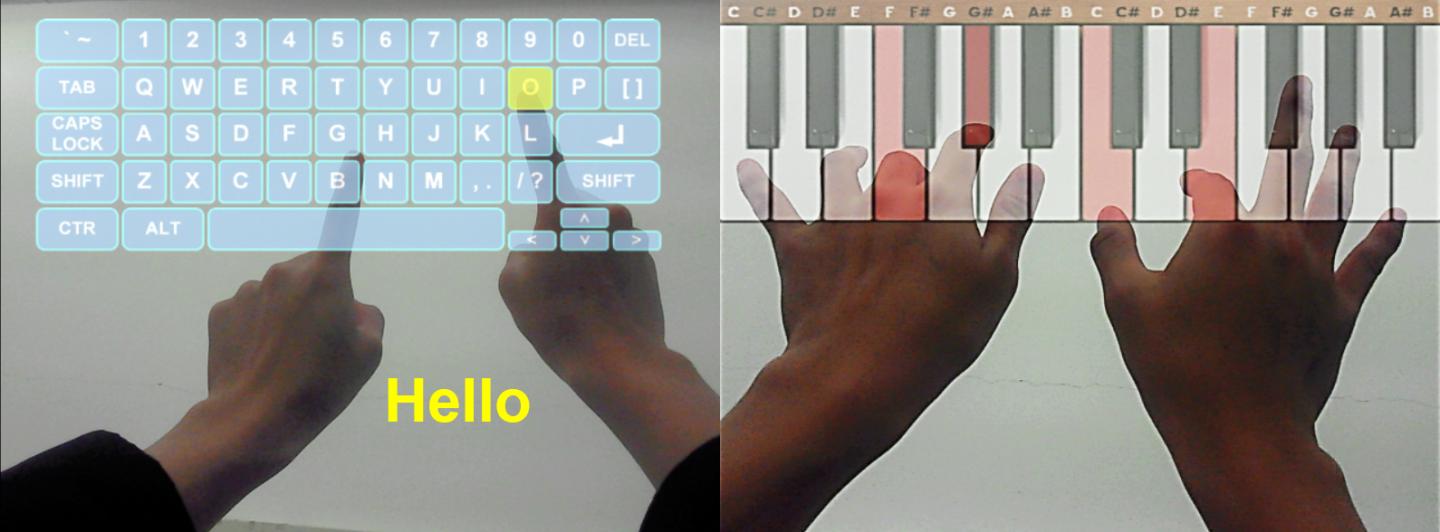
Tomorrow’s orbit today? This image shows how a large solar sail-equipped satellite could partly offset Earth’s and the Sun’s gravity with the slight but steady pressure of sunlight to hover above the Arctic or Antarctic, enabling continuous coverage of high-latitude regions for climate observation or regional communication services.
“Standard space missions employ conventional elliptical ‘Keplerian’ orbits,” comments Colin McInnes, Professor of Engineering Science at the UK’s University of Glasgow.
“However, our VisionSpace project has been investigating novel families of orbits and space systems across a broad range of sizes that could make use of additional factors such as solar radiation pressure, air drag or gravitational interactions.
“The space systems range from microscale applications such as satellite swarms and dust clouds, to mesoscale large deployable space webs and solar sails, all the way up to macroscale solutions such as asteroid capture.”
VisionSpace was a five-year project ending in 2014 to research space system engineering across the extremes of size, funded by the European Research Council.
Prof. McInnes, who oversaw the project while at the University of Strathclyde, was recently invited to ESA’s ESTEC technical centre by the Agency’s Advanced Concepts Team to highlight the project’s findings.
The ACT is tasked with peering beyond the horizon of current space projects.
Learn more: ‘POLAR-SITTING’ ORBIT
The Latest on: Advanced Concepts Team
[google_news title=”” keyword=”Advanced Concepts Team” num_posts=”10″ blurb_length=”0″ show_thumb=”left”]
via Google News
The Latest on: Advanced Concepts Team
- CRM Ratings Methodology 2024on April 27, 2024 at 10:19 am
When the Forbes Advisor Small Business team puts together a methodology to determine the top customer relationship management software, we use a combination of research, hands-on testing and feedback ...
- Christian Haynes NFL Draft 2024: Scouting Report for Seattle Seahawks IOLon April 26, 2024 at 11:25 pm
HAND: 9" ARM: 33½" WINGSPAN: 79¾" 40-YARD DASH: 5.03 3-CONE: N/A SHUTTLE: N/A VERTICAL: 33" BROAD: 8'6" POSITIVES — Advanced ...
- Buick’s Electric Future: Electra-L and Electra-LT Conceptson April 26, 2024 at 2:55 pm
L and Electra-LT, signaling a shift towards electric vehicles (EVs) built on the advanced Ultium platform. These concepts are destined exclusively for the Chinese market, aiming to revitalize Buick’s ...
- Spark Genesis AI Review – Genuine Trading Platform?on April 26, 2024 at 3:40 am
Discover the legitimacy of Spark Genesis AI, a crypto education platform that claims to equip learners with the latest crypto lessons.
- Celtics’ Content & Creative Teams Produce Boldest Playoff Marketing Campaign Yeton April 25, 2024 at 8:48 am
But much of this year’s excitement has also been initiated by the production of another Celtics team off the court – a team of creatives operating behind the scenes who have stirred up a rousing ...
- TradingAiCoin.com Upgrades Finance With Premium Featureson April 25, 2024 at 12:20 am
TradingAiCoin.com, a prominent finance platform, has introduced significant upgrades enhancing user experience and value. These enhancements ...
- Koenig & Bauer Plans Development Partnership with GSSCon April 24, 2024 at 10:19 am
Koenig & Bauer and Graphic Security Systems Corporation (GSSC) intend to jointly develop and deliver advanced anti-counterfeiting solutions.
- Everything You Need to Know About Llama 3 | Most Powerful Open-Source Model Yet | Concepts to Usageon April 24, 2024 at 9:14 am
Meta has recently released Llama 3, the next generation of its state-of-the-art open source large language model (LLM). Building on the foundations set by its predecessor, Llama 3 aims to enhance the ...
- A Nobel laureate walks into a first-year physics class…on April 18, 2024 at 5:00 pm
Share Share via Twitter Share via Facebook Share via LinkedIn Share via E-mail ...
- 10 Of The Fastest Cars Built With A V12 Engineon April 17, 2024 at 1:30 pm
V12 engines only really show up inside the most powerful sports cars and supercars. Here are the ones that pushed their engines to attain the fastest speeds.
via Bing News










